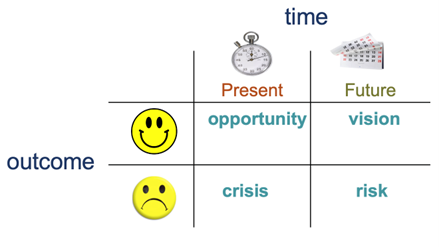
A systematic approach to ‘making the ask’
Making the ask, in person, to a major donor can be one of the most stressful parts of fundraising. Bernard Ross summarises the five key steps to making a successful solicitation – or ask – for a major gift.
The framework outlined below has been successful and has been proven to work in a range of settings, for a range of gifts from £5k up to £5m, and in a range of cultures and countries.
Although the model laid out here – developed with my colleague Clare Segal – is systematic, it’s not simplistic or mechanistic. People and their interactions are by their nature messy, which means any model must allow for that messiness.
We’ve tried and tested this approach in messy situations. It involves five steps or stages that we call the five Ps – Passion, Proposal, Preparation, Persuasion and Persistence.
1. Passion
Success in making the ask begins with having, and being able to share, Passion for the cause or project you’re championing. If the cause doesn’t excite and enthuse you, why should it work for anyone else?
Even if you’ve made this ask 1,000 times you need to be able to generate your personal emotional engagement in an instant. And you need to be able to turn it on when you’re tired and stressed. Think about the story you need to tell yourself to be energised and use it as what psychologists call an anchor.
Your passion is, of course, only half the equation. You also need to understand the prospect’s passion – what excites them, the potential donor. You need to understand their motivators – their philanthropic PIN code, to unlock their philanthropy. Is it to promote the reputation of their town, to offer opportunities for young people, or promote great art.
And on the flipside, you also need to be able to address their concerns or hygiene factors – the potential concerns that they need to have addressed: your weak balance sheet, a past scandal, your loss of NPO status.
2. Proposal
A Proposal is a way of defining both the challenge you’d like the prospect to help with and your preferred solution. Think of it as your case for support.
It needs to be in a form that prospects can engage with and respond to. It’s not the same as a business plan or concept note. You might consider presenting your case using our story arc tool.
This framework allows you to create a case connecting to the different psychological preferences people have by time and outcome. The result is four ways to share your idea: risk, crisis, opportunity and vision:

Some prospects prefer to tackle a risk, some respond best to a crisis, some like to grasp an opportunity and some want to add to a vision. You can also use the narrative arc: the work we do is at risk, and if we don’t secure the funds to maintain it, this could become a crisis, leading to closure.
But if you can provide support, this will provide enough cash to seek matched funding from elsewhere, and that could help us towards a becoming a sustainable and successful arts organisation.
3. Preparation
Preparation allows you to plan ahead for different eventualities and possibilities, which means you minimise the need to think on your feet in possibly mission-critical situations with a major donor or social investor.
To prepare, decide what might be an acceptable range of possible outcomes. Try setting your LIMit: Like to get, Intend to get, Must get.
These three options represent:
• your ideal outcome: maybe a significant unrestricted cash gift over three years guaranteed, and all upfront,
• an acceptable option: perhaps a smaller initial contribution, building up over three years if the first 12 months are successful.
• a must get result: the least investment you can secure without feeling you have failed, maybe only a gift in kind of a vehicle rental for one year.
4. Persuasion
Persuasion can come into play in person, on the phone, on a Zoom call, in an email or in a formal written proposal. What you need and why the prospect should support you should already be super clear.
The key is to make use of your preparation and to respond flexibly and creatively to the prospect’s needs and interests in the moment. What you need is to understand the psychological preferences and filters that will encourage your prospect to say ‘Yes’.
For example, we did some work for a South-West Museum service and asked museum members about what other interests they had outside the museum. Responses, included fishing, antiques, walking etc.
But by far the most common hobby was gardening, so we reframed much of the funding appeal language in terms of horticulture, using words and phrases, like plant the seed, grow the collection, nurture the younger audience. The result was an increase in giving both in terms of volume in value.
5. Persistence
To be successful long-term you need to know when to keep going with a course of action and when to radically change and pivot – or even stop. Persistence involves developing such intelligent flexibility.
Be aware of the killer questions that can come your way. What do you most worry being asked? This might involve a response to a challenge raised: that previous scandal in your organisation, a failed project that’s had some bad publicity.
Make sure you have an answer. If you don’t know the answer, promise to come back to the prospect – and make sure you do. Maybe test out your ask with a mentor who role plays the grumpy prospect.
These are high-risk and high payoff situations, so above all you need to feel confident.
Bernard Ross is director of =mc, a management consultancy working worldwide for ethical organisations.
You can learn more about the five steps and find psychological tools to build confidence in Making the Ask: The artful science of high-value fundraising' by Bernard Ross and Clare Segal.
Join the Discussion
You must be logged in to post a comment.